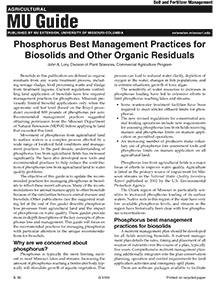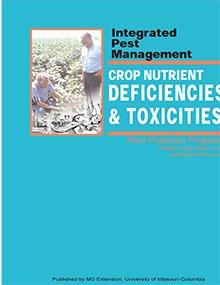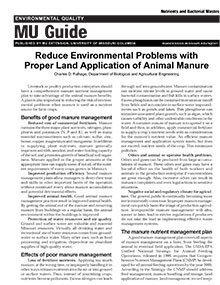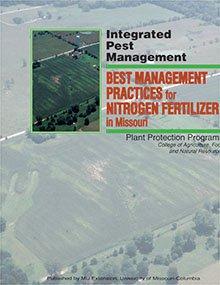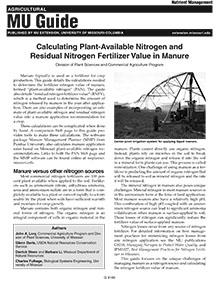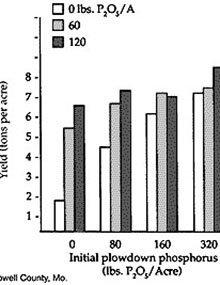The following publications cover topics related to Nutrient Management. For a complete list of MU Extension publications, visit the main Publications page.
Managing Nitrogen to Protect Water Quality
Reviewed
How is nitrogen lost from the soil?Nitrogen is primarily lost by three pathways:
Crop Nutrient Deficiencies and Toxicities
Reviewed
Editor's note
The following abstract describes a publication that is only available as a downloadable PDF.

Agricultural Phosphorus and Water Quality
Reviewed
We value clean water for many reasons. We depend on lakes and streams for drinking water and recreation. Wildlife depends on habitats created by healthy streams, wetlands and lakes. There is strong support in both rural and urban communities for efforts to maintain and improve water quality.
Reduce Environmental Problems With Proper Land Application of Animal Manure
Reviewed
Livestock or poultry production enterprises should have a comprehensive manure nutrient management plan to take advantage of the animal manure benefits. A plan is also important in reducing the risk of environmental problems when manure is used as a nutrient source for farm crops.
Best Management Practices for Nitrogen Fertilizer in Missouri
Reviewed
Successful nitrogen management delivers enough nitrogen to crops to optimize yield and profitability while minimizing losses to water and air. Learn the best management practices from sound economic, production and environmental viewpoints in this guide.
Phosphorus in Missouri Soils
Revised
In Missouri, soils generally contain from 800 to 2,000 pounds of total phosphorus (P) per acre. Most of the phosphorus is fixed, that is, not available for use by plants.
